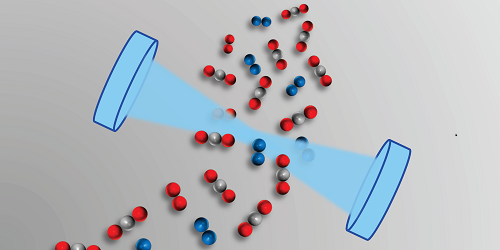Correcting Hardware Bias in Molecular Spectrometers
Infrared spectroscopy is an irreplaceable tool for quantifying atmospheric CO2, but obtaining the gas concentration from a spectral signal depends on knowing the absorption cross section—how strongly the molecule interacts with photons at a particular wavelength. Researchers have long sought to determine the CO2 cross section for infrared wavelengths with a precision better than 0.1%, but even calculations from first principles come with an uncertainty above 1%. Now, by measuring a reference sample—whose composition was precisely known —with multiple highly sensitive cavity ring-down spectrometers (CRDSs), Adam Fleisher and colleagues at the National Institute of Standards and Technology in Maryland, have derived the CO2 cross section with an uncertainty of 0.06%.
In a CRDS, a laser beam bounces between a pair of mirrors and is gradually absorbed by the gas in the cavity, with the rate depending on the gas concentration. After minimizing known sources of error in a set of exquisitely precise CRDSs, Fleisher and colleagues were able to focus on the performance of the digitizer hardware—the part of the instrument that turns the analog output from the photodetector into a digital signal for analysis. When they compared the results of five separate digitizers, the researchers found unexpected biases unique to each device. By adjusting their measurements based on this previously uncharacterized digitizer bias, the team obtained a value for the absorption cross section with a 25-fold improvement in uncertainty relative to earlier results.
The improvement equates to a CO2 measurement precision of better than 0.4 parts per million at current atmospheric concentrations, which will allow more accurate characterization of gas sources and sinks. The result also applies to studies of other gas molecules, including the optical detection of biosignatures on exoplanets.
This research is published in Physical Review Letters.
–Marric Stephens
Marric Stephens is a freelance science writer based in Bristol, UK.





